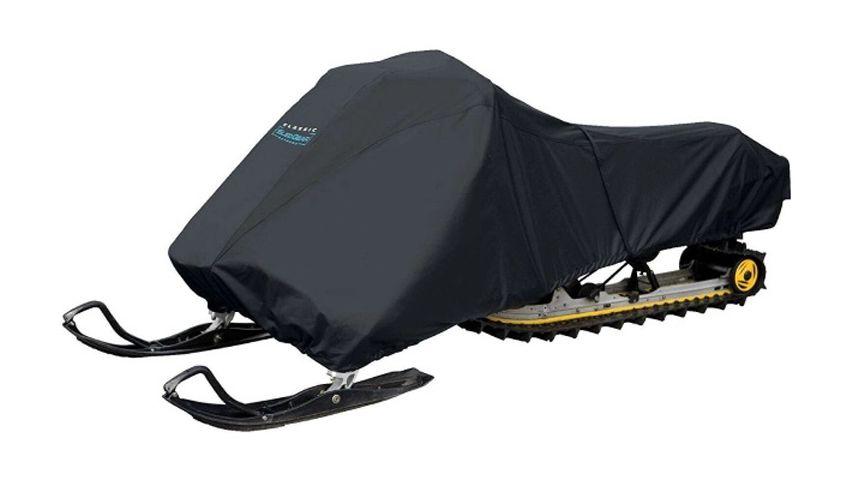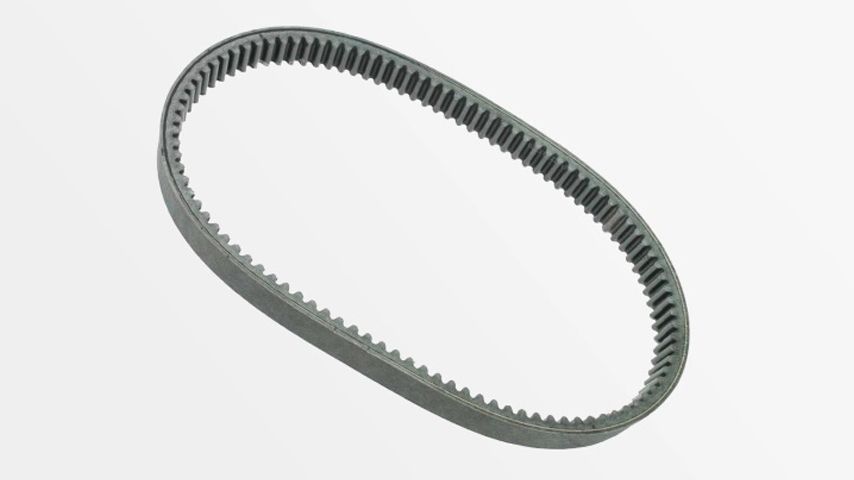How to Prepare Your Snowmobile for Summer Storage
Yet another winter season is over, and it’s time to take care of your faithful snowmobile. To be totally sure in your machine when opening the cover next time, you should do some proper service. This article has two parts - the Must Do and Might Do. Of course it all depends on the owner, but we’d like to warn you that bad storing might cost a lot in the future.
Attention! Before making any maintenance on your snowmobile consult your user’s manual or dealer! There might be useful advice or some restriction that might lead to cutting off your warranty service.
MUST DO
Washing

Cleaning your snowmobile will help to prevent any corrosion and will make the whole further process more convenient. Moreover, it’s easier to notice cracks in the chassis, suspension, etc. Take care of the intake and the exhaust manifold. Before washing, tape them off to prevent moisture and water from getting inside the engine.
When cleaning, you can use both warm soapy water with a soft sponge or a pressure washer. Once you’re sure that washed out all the dirt and salt from the outside and the inside, leave your sled to dry. You can fasten the process by wiping it down with a microfiber towel (Don’t use paper towels on gloss plastic! They can scratch your gloss plastic!). Make sure that the seat is not slippery. If you want, you may wax the hood or use a protective polish. Just imagine how beautiful the sled will be in the next season when you find it shining!
Refreshing the fuel

The essential thing for long-term summer sled storage is to take care of the fuel in your tank. What exactly to do would depend on what fuel you are using.
- If you use non-ethanol fuel, leave at least a half tank of it in the sled and get an additive stabilizer to prevent gasoline solvents from breaking down and corroding the carb. After that run the sled for long enough to get this mixture into the complete system.
- If your fuel has ethanol, the best way is to drain it out and replace it with a non-ethanol one.
Some older models use a carburetor system, and there is an opposite opinion that the fuel tank should be completely drained. Be sure to research which type of fuel system is in your sled to make the right decision about what will work best for your machine.
Greasing lube points and the chassis

At the beginning, take a look at your user’s manual to find out which grease is recommended or use an all-season grease. Grease all zerks in your rear suspension, steering, front suspension, and drivetrain. This will keep the suspension and steering systems working smoothly and decrease the chances of corrosion.
Don’t worry about over greasing, all of the excess will be pushed out of the tube or shaft. To protect the rest of the metal surfaces on your sled, you can spray them with WD-40 or another lightweight oil. Be careful to not spray the clutches, though. Right before the first winter riding, wash everything down with a degreaser to remove any oily residue.
Taking the battery off

If you don’t want to start a new season with a huge waste of money for a new battery, we recommend taking care of it, too. It should be removed and stored in an area where the temperature can be controlled, out of the sunlight. Moreover, try to keep it on some sort of trickle charge.
Protecting from moles and other critters

You would be unpleasantly surprised when finding a rat’s nest in your exhaust right before the first ride. These little creatures always find a secluded place to make a home, and your sled is a perfect variant for that. To keep the critters far from it, put a few mothballs under the hood and cover the exhaust and intake with a chicken wire. Another variant is a small rubber ball or a piece of wood. If you want, use all these options together!
One very important thing to remember - take them off before firing it back up in the fall!
Overall check

Take a break and check your sled over. Is everything in its place? Inspect the brake system and fluid. This is the moment when you can refresh the snowmobile’s oil and the chaincase oil. Look for excessive play in moving parts (ball joints, steering, bushings, etc.). Check your carbides and studs.
Covering the machine

To prevent your sled from scratches and moisture build-up, get a proper cover. The best variant is a fitted cover. If you don't have one, you can choose some soft, lightweight, breathable cover just like the thermal underwear for waders. Make it tight because the less air pockets you have, the better.
Might Do
Starting the snowmobile once a month

Depending on the way of storing your sled, the next few points may differ.
- The first variant is to park your machine and keep it “asleep” till next season
- The second variant is running the engine once a month
You can choose any variant you like. If you are of the first kind, then you need to fog the engine. Check how to do that in the next paragraph. If you want to be the second kind, every month until you take your snowmobile out of storage, make a point to start it up and let it run for about 2-3 minutes. This will prevent sediment from settling and seals from drying out.
Fogging the engine

Fogging the engine is when you add extra lubricant to the engine before long-term storage to prevent corrosion. The process gets its name from the abundance of white smoke caused by the excess lubricant so you will want to do this outside or in a well ventilated area.
- If you are one of those sled owners that park the sled in April and don’t plan on looking at it until November it might not be a bad idea.
- If you start your sleds at least once a month, fogging isn’t that crucial.
There are a couple of different ways to fog an engine, so be sure to research the way that is best for your snowmobile model. Just remember if you fog your engine, when you start it up in the fall run it for a while and install new plugs to prevent fouling.
Removing the driven belt

To start with, if you leave the driven belt, nothing bad will happen. The compounds used in the belts now are so advanced that when you run your sled on a stand in the fall, it will become pliable within seconds.
If you plan to run the sled once a month, you don’t really need to remove it. Be careful! Never start a sled without the belt! If you’re going to park your sled till November, you might take the belt off. It all depends on you.
Releasing the springs

By taking the tension off the strings, they could potentially last longer. Still the alloys become better, so this action is up to the owner. If you decide to take the tension off, keep in mind the preload setting the springs were at. To prevent your hand and fingers from being pinched, set your preload to the lowest setting before removal.
Putting on a stand

Storing the sled on a stand is up to you, too. This point is useful for both garage and machine. Speaking of the sled, keeping it off the ground will prevent condensation from climbing up your sled and resulting rust. This also allows the suspension to “relax” and not put extra pressure on springs and shocks. Talking about the advantages for your garage, the sled won’t scratch and stain the floor. Moreover, if you use snowmobile dollies, it will be easier to move the sled around if needed.
Hope these tips were useful, and your snowmobile will stay in peak condition during the off season! If you followed them, for sure you’ll be fully prepared to hit the trail later this year.













